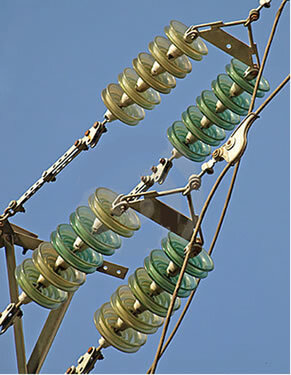When we talk about electric energy, we are soon a little afraid, because the electric shock comes to mind. But if we stop to think... how does electricity reach our homes? It arrives through electricity transmission lines.
We can calculate the loss of electrical energy through the power dissipated in the wires by the following expression:
P = R.i2
In the expression above we have to R and the electrical resistance of the thread itself and i and the electric current that goes through it. According to the expression, the greater the value of the electrical current that we want to carry, the greater the loss of energy through energy dissipation in the wires. Therefore, it is more advantageous to transport at very high voltages with lower currents.
Like the transmission lines of the Itaipu hydroelectric plant, the transmission lines can operate with voltages of up to 750 kV.

Transmission towers must support cables that are voltages of hundreds of kV.
Like P = R.i2, we have to: so that we can have less energy loss through the dissipation in the wires, we must keep the electric current and the resistance of the wires very small. We must also pay attention to the fact that the electrical resistance of wires is proportional to their length and inversely proportional to the area of their cross section. Thus, thicker wires could be used to reduce energy loss, a fact that which does not occur due to the high cost and also the large amount of material that would be used.
As we know, the working voltage of these transmission lines is very high, so they need to be well insulated, so that no short circuits or even electrical discharges between the ground and the lines. For this reason, we see that the wire support towers are quite tall and wide. The wires must be attached to insulators (glass or porcelain) very long, as shown in the figure below. Generally, these insulators have an “accordion” shape in order to increase the electrical path between their ends. In this way, dirt (which can be deposited) and rainwater do not produce a low road resistance, which could cause electrical discharges between the high voltage wire and the tower that is grounded.

Glass insulators used to insulate high voltage circuits.
By Domitiano Marques
Graduated in Physics
Brazil School Team
Electromagnetism - Physics - Brazil School
Source: Brazil School - https://brasilescola.uol.com.br/fisica/transmissao-energia-eletrica.htm
